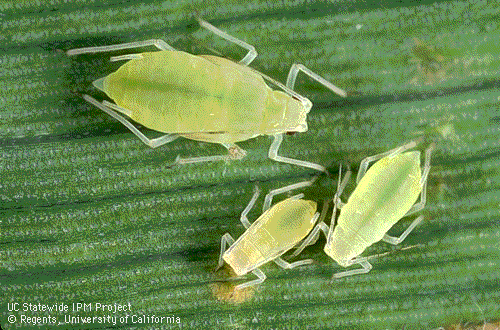The jaguar (Panthera onca) is a big cat, a feline in the Panthera genus, and is the only Panthera species found in the Americas. The jaguar is the third-largest feline after the tiger and the lion, and the largest in the Western Hemisphere. The jaguar's present range extends from Mexicoacross much of Central America and south to Paraguay and northern Argentina. Apart from a known and possibly breeding population inArizona (southeast of Tucson), the cat has largely been extirpated from the United States
This spotted cat most closely resembles the leopard physically, although it is usually larger and of sturdier build and its behavioral and habitatcharacteristics are closer to those of the tiger. While dense rainforest is its preferred habitat, the jaguar will range across a variety of forested and open terrain. It is strongly associated with the presence of water and is notable, along with the tiger, as a feline that enjoys swimming. The jaguar is a largely solitary, stalk-and-ambush predator, and is opportunistic in prey selection. It is also an apex and keystone predator, playing an important role in stabilizing ecosystems and regulating the populations of prey species. The jaguar has an exceptionally powerful bite, even relative to the other big cats.[3] This allows it to pierce the shells of armoured reptiles[4] and to employ an unusual killing method: it bites directly through the skull of prey between the ears to deliver a fatal bite to the brain.[5]
The jaguar is a near threatened species and its numbers are declining. Threats include habitat loss and fragmentation. While international trade in jaguars or their parts is prohibited, the cat is still regularly killed by humans, particularly in conflicts with ranchers and farmers in South America . Although reduced, its range remains large; given its historical distribution, the jaguar has featured prominently in the mythology of numerous indigenous American cultures, including that of the Maya and Aztec.
Physical characteristics
The jaguar is a compact and well-muscled animal. There are significant variations in size and weight: weights are normally in the range of 56–96 kilograms (124–211 lb). Larger males have been recorded at 160 kilograms (350 lb)[26] (roughly matching a tigress or lioness), and smaller ones have extremely low weights of 36 kilograms (80 lb). Females are typically 10–20% smaller than males. The length of the cat varies from 1.62–1.83 metres (5.3–6 ft), and its tail may add a further 75 centimeters (30 in). It stands about 67–76 centimeters (27–30 in) tall at the shoulders.[27]
Further variations in size have been observed across regions and habitats, with size tending to increase from the north to south. A study of the jaguar in the Chamela-Cuixmala Biosphere Reserveon the Mexican Pacific coast, showed ranges of just 30–50 kilograms (66–110 lb), about the size of the cougar.[28] By contrast, a study of the Jaguar in the Brazilian Pantanal region found average weights of 100 kilograms (220 lb) and weights of 136 kilograms (300 lb) or more are not uncommon in old males.[29] Forest jaguars are frequently darker and considerably smaller than those found in open areas (the Pantanal is an open wetland basin), possibly due to the smaller numbers of large herbivorous prey in forest areas.[30]
A short and stocky limb structure makes the jaguar adept at climbing, crawling and swimming.[27]The head is robust and the jaw extremely powerful. The jaguar has the strongest bite of all felids, capable of biting down with 2,000 pounds-force (8,900 N). This is twice the strength of a lion and the second strongest of all mammals after the spotted hyena; this strength is an adaptation that allows the jaguar to pierce turtle shells.[4] A comparative study of bite force adjusted for body size ranked it as the top felid, alongside the clouded leopard and ahead of the lion and tiger.[31] It has been reported that "an individual jaguar can drag a 360 kg (800 lb) bull 8 m (25 ft) in its jaws and pulverize the heaviest bones".[32] The jaguar hunts wild animals weighing up to 300 kilograms (660 lb) in dense jungle, and its short and sturdy physique is thus an adaptation to its prey and environment.
A melanistic jaguar. Melanism is the result of a dominant allele but remains relatively rare in jaguars.
The base coat of the jaguar is generally a tawny yellow, but can range to reddish-brown and black. The cat is covered in rosettes for camouflage in its jungle habitat. The spots vary over individual coats and between individual Jaguars: rosettes may include one or several dots, and the shape of the dots varies. The spots on the head and neck are generally solid, as are those on the tail, where they may merge to form a band. The underbelly, throat and outer surface of the legs and lower flanks are white.[27]
A condition known as melanism occurs in the species. The melanistic form is less common than the spotted form (it occurs at about six percent of the population)[33] of jaguars and is the result of a dominant allele.[34] Jaguars with melanism appear entirely black, although their spots are still visible on close examination. Melanistic Jaguars are informally known as black panthers, but do not form a separate species. Rare albino individuals, sometimes called white panthers, also occur among jaguars, as with the other big cats.[30]
While the jaguar closely resembles the leopard, it is sturdier and heavier, and the two animals can be distinguished by their rosettes: the rosettes on a jaguar's coat are larger, fewer in number, usually darker, and have thicker lines and small spots in the middle that the leopard lacks. Jaguars also have rounder heads and shorter, stockier limbs compared to leopards.[35]







